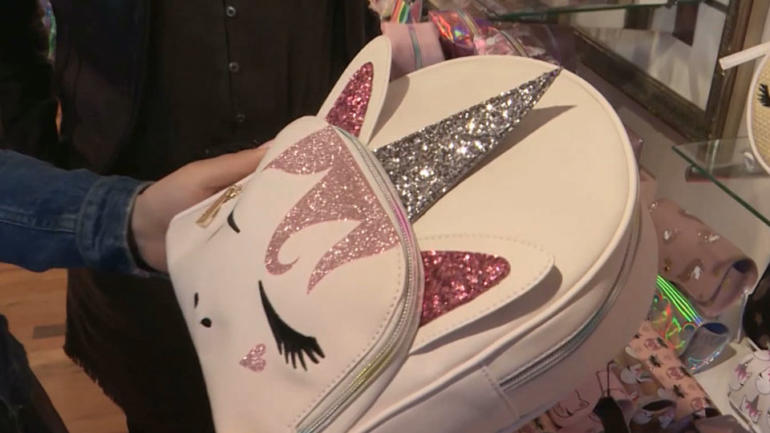The Trump administration’s trade war with China started with tariffs on steel and aluminum. At the time, the U.S. president said tariffs wouldn’t target consumer goods. But this September he added handbags to a growing list of items to be hit with a 10 percent tariff. It caught many handbag makers off guard. Now many are scrambling to adjust.
CGTN America’s Karina Huber reports.
OMG Accessories’ handbags used to be made entirely in China. Today roughly 90 percent of them are made in Myanmar.
Retailing for between $25 and $50 they are targeted at the youth market, which is highly price sensitive.
That’s why a year and-a-half ago owner Anne Harper began shifting production out of China into lower-cost Myanmar. The move was not a seamless transition.
“It was a challenge. We had quoted customers specific lead times, thinking that we were giving long enough lead times for the production and we had a lot of late deliveries. We had to beg and plead for extensions,” said Harper.
China’s manufacturing know-how allows it to produce and ship goods at a faster pace than most competitors.
But the move turned out to be a sound decision. Bags made in China now face a 10 percent tariff in the U.S. that is set to increase to 25 percent come January.
“Being prepared and having this additional factory where we can produce goods, without this increase, is the best thing that could have happened to my business,” said Harper.
Others aren’t so fortunate.
Many handbag makers were unprepared for the trade war started by the Trump administration. They now find themselves having to make some tough decisions: either shift production out of China, which isn’t easy, or swallow the extra cost and pass some of it on to consumers.
“I think the contemporary price points – those handbags that are running between 150 and 500 dollars – that range are going to be affected the most,” said Susan Scafidi, Director of the Fashion Law Institute at Fordham Law School
That’s the price range for Rebecca Minkoff handbags. The company recently said it is already feeling the pain from tariffs, but won’t be raising prices for now.
But if U.S. tariffs do rise to 25 percent, fashion expert Scafidi warns consumers should expect to see price hikes. But she says they will have to be gradual.
“I don’t think any company can afford to pass on a 25 percent price hike all at once to the consumer. I think we’ll start to see small – at the margins – 5 percent, 10 percent price hikes. Maybe we’ll see less discounting in the short run. Over time they might hope to pass on the entire 25 percent, but I think that’s very unlikely,” said Scafidi.
Handbag makers are hoping the Trump administration will reverse course on its trade policy. In the meantime, many are scrambling to get as much product stateside, now, before the tariffs more than double in January.
 CGTN America
CGTN America

